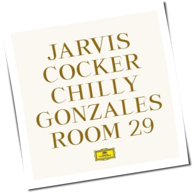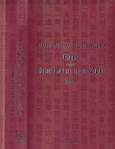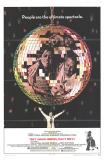CRISIS , WHAT CRISIS ? (CIV): Folk Devils and Moral Panics
Folk devil is a person or group of people who are portrayed in folklore or the media as outsiders and deviant, and who are blamed for crimes or other sorts of social problems.
The pursuit of folk devils frequently intensifies into a mass movement that is called a moral panic. When a moral panic is in full swing, the folk devils are the subject of loosely organized but pervasive campaigns of hostility through gossip and the spreading of urban legends. The mass media sometimes get in on the act or attempt to create new folk devils in an effort to promote controversy. Sometimes the campaign against the folk devil influences a nation's politics and legislation.
1.
Vgl. auch Suicide CCLXVIII – Deviancy Amplification Spiral und
Suicide CCCXCIII – KITNO (Killing In The Name Of)
Und vgl. auch CRISIS , WHAT CRISIS ? (XVI): Mechanismen der Eskalation - und ihre Bearbeitung im Politikunterricht
2.
Freihandel versus Demokratie – Sind CETA und TTIP mit der Demokratie vereinbar?
Audio von Markus Metz und Georg Seeßlen, GETIDAN 3. Mai 2016
Zündfunk Generator – Bayern 2 (Sendung von Sonntag, 24.04.2016)
Lesen/Hören!!
Die GBlogSuche nach »Crisis what crisis« hat 138 Resultate geliefert.
The pursuit of folk devils frequently intensifies into a mass movement that is called a moral panic. When a moral panic is in full swing, the folk devils are the subject of loosely organized but pervasive campaigns of hostility through gossip and the spreading of urban legends. The mass media sometimes get in on the act or attempt to create new folk devils in an effort to promote controversy. Sometimes the campaign against the folk devil influences a nation's politics and legislation.
1.
- Die „moralische Panik“, die nach Cohens Modell periodisch in Gesellschaften wie der unseren auftritt, ein kollektives Gefühl der Bedrohtheit, das in Aggression umschlägt, ist nicht ohne die Wirkung der jeweils aktuellen Medien zu sehen. Sie sind vielleicht nicht die Erzeuger, wohl aber die Verstärker dessen, was Cohen die „Abweichungsverstärkungsspirale“ (Deviancy Amplification Spiral) nennt: In einer Gruppe von Menschen, die sich durch eigene Charakteristika identifizieren, werden alle die Elemente übersteigert und rituell beschworen, die sich als bedrohlich oder auch nur „anders“ darstellen. Der Mainstream der Gesellschaft gruppiert sich um die Abwehr des Abweichenden und kommt bemerkenswerterweise – Stanley Cohens Hauptarbeitsgebiet war die Kriminologie – überein, bestimmte Werte und Gebote außer Kraft zu setzen. Im Zustand der moralischen Panik erlaubt sich die Gesellschaft passiv den Verzicht auf Gebote von Solidarität, Nächstenliebe oder Toleranz und aktiv die Hetze, die Abwertung und schließlich die Gewalt. Eine solche moralische Panik kann sich in einer Straße ausbreiten, in der sich etwas „Abweichendes“ oder „Fremdes“ niederlässt; zu einem makrosozialen Ereignis aber kann sie nur durch die mediale Verbreitung werden....
Vgl. auch Suicide CCLXVIII – Deviancy Amplification Spiral und
Suicide CCCXCIII – KITNO (Killing In The Name Of)
Und vgl. auch CRISIS , WHAT CRISIS ? (XVI): Mechanismen der Eskalation - und ihre Bearbeitung im Politikunterricht
2.
Freihandel versus Demokratie – Sind CETA und TTIP mit der Demokratie vereinbar?
Audio von Markus Metz und Georg Seeßlen, GETIDAN 3. Mai 2016
Zündfunk Generator – Bayern 2 (Sendung von Sonntag, 24.04.2016)
Lesen/Hören!!
Die GBlogSuche nach »Crisis what crisis« hat 138 Resultate geliefert.
gebattmer - 2016/05/08 18:04



























































Trackback URL:
https://gebattmer.twoday.net/STORIES/1022564970/modTrackback